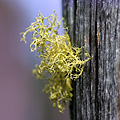The Global Fungal Red List Initiative

Species of fungi are threatened by habitat loss, loss of symbiotic hosts, pollution, over exploitation, and climate change, but the vast majority of fungal species have not been assessed.

The aim of the global IUCN Red List of Threatened Species™ is to convey the urgency of conservation issues to the public and policy makers, as well as help the international community reduce species decline and extinction. The IUCN Red List is widely recognized as the most comprehensive, objective global approach for evaluating the conservation status of animal, fungal and plant species, and it has a large impact on the setting of priorities in nature conservation.
How can I contribute?
Nominations are encouraged from anyone who can provide information on fungal species that are likely to be globally threatened and therefore should be evaluated. You can get started in a few simple steps:
Video tutorial – How to add a species proposal
How to add a species proposal for a Global Fungal Red List Assessment by Michael Krikorev.
Who can contribute?
Proposal may be made by individuals, small groups of collaborators, mycological societies, or institutions. The success of this project will depend on the engagement of the mycological community, both professional and amateur, to nominate species, provide the needed information, and to check and comment on the submitted data to ensure that the required data are available and are as complete and accurate as possible. The final red list evaluations will be based on the information provided by the nominators and participants who have commented on the proposals.
Organization
The initiative is being organized by the five IUCN fungal specialist group chairs together with Craig Hilton-Taylor at IUCN's Red List Unit. The project is led by Greg Mueller, chair of the mushroom, bracket and puffball specialist group. Michael Krikorev and Anders Dahlberg, mycologists at the Swedish Species Information Centre, have developed and run the web site. The global red-list evaluations of the nominated fungal species will be accomplished by the appropriate fungal specialist group under the coordination of Greg Mueller with supervision from IUCN.
Current Assessment status
Chytrid, Zygomycete, Downy Mildew and Slime Mould Specialist Group

- Co-Chairs
- Prof Tetyana Kryvomaz
- Dr Mayra Camino Vilaro
Read more
Lichen Specialist Group

- Co-Chairs
- Dr Christoph Scheidegger
- Dr Rebecca Yahr
- Ms Jessica Allen
Read more




